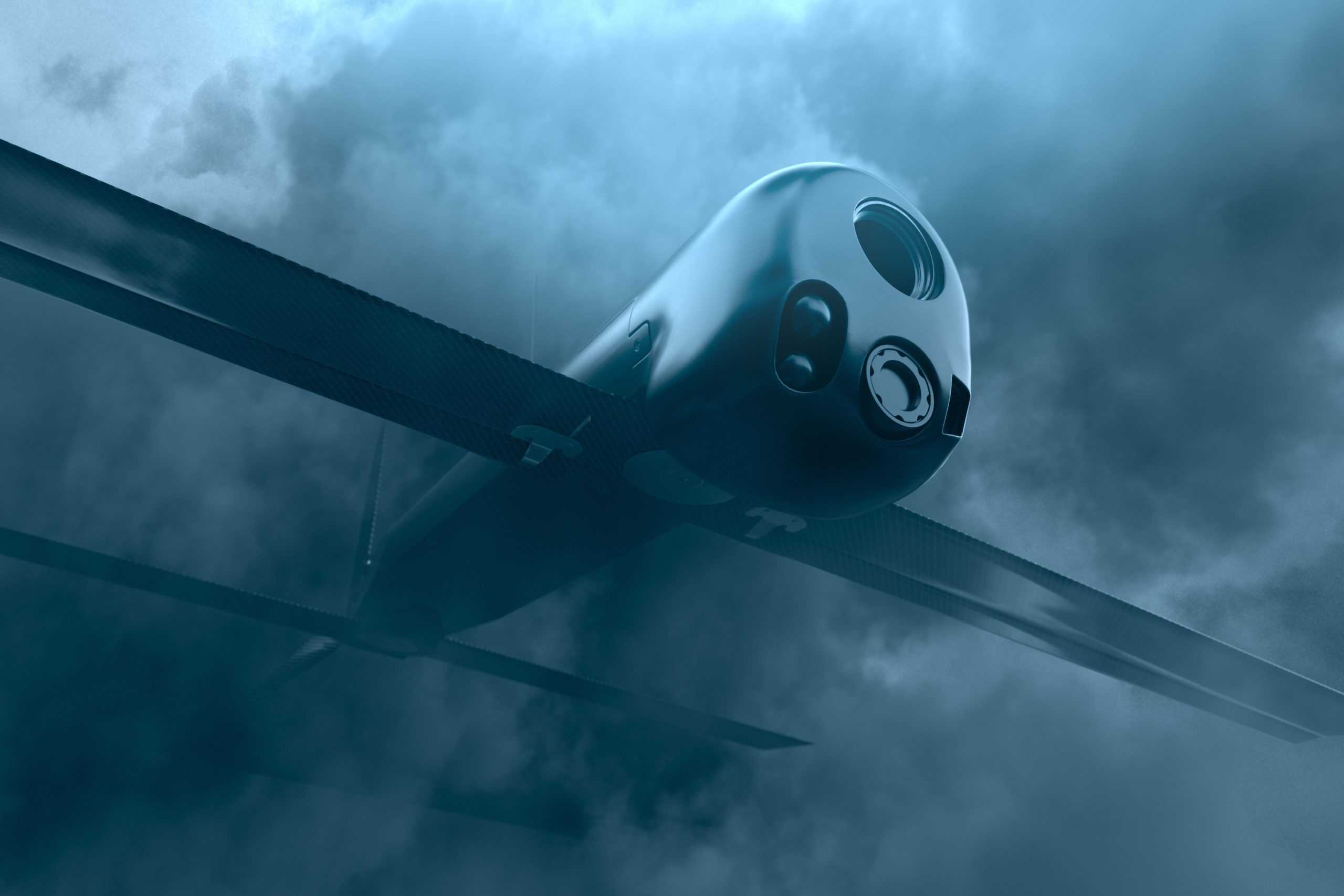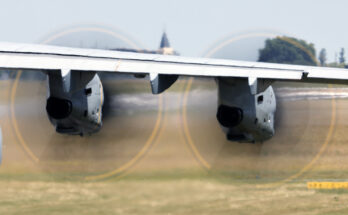
Switchblade 300 is a back-packable and rapidly deployable loitering munition system for use against beyond-line-of-sight (BLOS) targets. Image – AeroVironment, Inc.Loitering munitions, often dubbed “kamikaze” or “suicide drones,” are a disruptive innovation in contemporary warfare, combining the precision of missiles with the versatility of drones. These missile-drone hybrids are characterized by their ability to “loiter” or hover over targets, waiting for the optimal time to strike.
Emerging as a cost-effective solution to counter enemy surface-to-air missile systems (SAMs), loitering munitions are characterized by their lightweight design and versatility. They can be deployed en masse from different launch platforms and locations. With capabilities for mid-course correction and precise targeting, they minimize collateral damage and offer enhanced mission flexibility. Integrating intelligence, surveillance, and reconnaissance (ISR) functions, along with targeted strike capabilities and flexible deployment options, these weapons represent a significant advancement in multi-domain warfare.
Past
The concept of loitering munitions emerged during the late Cold War, with Israel Aerospace Industries’ Harpy being the pioneering model. The Israeli Air Force (IAF) recognized the threat posed by Soviet SAMs during the 1973 Yom Kippur War and developed uncrewed drones to provide real-time targeting links to IAF warplanes to neutralize air defenses. This innovation led to Israel’s decisive victory over the Syrian air force in the 1982 Lebanon War. Despite armed drones gaining popularity, their cost remained a challenge. To address this issue, Israel removed the precision targeting feature, giving rise to the IAI Harpy.
In 2020, during the Second Nagorno-Karabakh War, loitering munitions, including IAI’s Harop, a larger and more advanced version of Harpy, were used extensively for the first time against a state military. Azerbaijan utilized these systems to overwhelm Armenian air defenses and swiftly destroy ground targets. The investment in loitering munitions, alongside other military advancements, proved highly successful, contributing significantly to Azerbaijan’s victory in the conflict and garnering interest from militaries worldwide.
Present
The emergence of global conflict has brought new players into the loitering munitions market, driving increases in demand and manufacturing. One significant player is Russia.
The Lancet-3, developed by the Zala Group, is the primary drone being used by Russian forces. These drones have become Russia’s main tool, targeting high-value assets such as artillery, vehicles, air defenses, and command infrastructure, posing a substantial threat to Ukrainian forces on the battlefield. According to the manufacturer, between the outset of the war and Dec. 29, 2023, Lancet munitions have been used 872 times, destroying a purported 698 targets.
According to BIS Research, Moscow’s extensive use of kamikaze drones in the ongoing conflict with Ukraine has driven its government to set a production goal of 18,000 drones annually by the end of 2026, reflecting an estimated US$12 billion in market value.
Similarly, Israel utilized loitering munitions in its ongoing conflict with Hamas. The IDF is primarily using Rafael’s miniature 3-kg Spike FireFly loitering munitions. Israel Aerospace Industries (IAI) inked a $110 million export deal with Estonia for an undisclosed model of long-range loitering munitions in May 2023. Others have sought to replicate Israel’s success in loitering munition development, as the weapons become a fundamental part of 21st-century warfare.
Future
Recent conflicts in Ukraine, the Middle East and Nagorno-Karabakh have shed light on the value of loitering munitions in long-range warfare. Experts predict the market for this emerging weapon category will grow to US$6.85 billion by 2031.
The U.S. is likewise seeking to keep up with the trend, supporting AeroVironment’s Switchblade family of loitering munitions, committing in April 2022 to providing over 700 Switchblade units to allied Ukraine. The White House committed another 700 Phoenix Ghost loitering munitions to Kyiv later that year.
At home, the U.S., learning from both Nagorno-Karabakh and Ukraine, has sought to quickly outfit its service branches with loitering munitions. In July 2023 the Pentagon announced Project LASSO, a brigade-level program geared at providing Army infantry units with loitering munitions, beginning with the Switchblade 600. The Marine Corps has similarly begun several loitering munition programs, with plans for squads to receive the weapons as soon as 2027.
Although yet to lay claim to a spot in the loitering munitions market, China has been taking careful notes. Analysts have noted China’s attention to the poor success rate of loitering munitions in anti-armor operations, noting the inability of the Switchblade-300 to destroy medium to heavy armored vehicles. This attention to detail is likely to yield more advanced loitering munitions from the East.
Counteracting Loitering Munitions
As loitering munitions quickly evolve from specialized systems to military necessities, the need for effective countermeasures becomes more evident. Traditional radar detection has proven ineffective due to the small size and composition of the weapons.
To enhance detection and targeting accuracy, more advanced radar technology, including photoelectric detection, is being explored. Additionally, electronic warfare tactics like powerful electromagnetic pulses are being considered to disrupt the internal circuits of loitering munitions. Another strategy involves “hijacking” the weapons with fake GPS signals to interfere with their guidance systems.
In Ukraine, soldiers on both sides use simple tactics against loitering munitions. They use decoys to mimic high-value assets and lure the weapons away, while camouflage netting is employed to conceal equipment and intercept incoming munitions. Improvised vehicle caging made of metal bars and wiring has also been used to intercept these threats on the battlefield.
As part of ongoing efforts to counter uncrewed aerial vehicles (UAVs), manufacturers are developing interceptor drones—smaller uncrewed systems designed to neutralize enemy drones. These interceptors can ram a hostile drone off-course, deploy a net to capture it, or strike it down as a projectile, effectively employing a “suicide drone” against another drone. With a range of options available, interceptor drones offer a viable approach to countering the threat posed by loitering munitions.
Summary
The introduction of affordable, adaptable, and lethal strike capabilities into military markets is rapidly changing the nature of warfare. Access to loitering munitions has leveled the playing field between great military powers and nations lacking military prowess, calling into question the primacy of expensive warfighting assets. Continued use of loitering munitions is likely to transform modern warfare, driving a new category of hybrid weapons and sparking a push for effective countermeasures.
Sources:
- Atherton, Kelsey. “Loitering Munitions Preview the Autonomous Future of Warfare.” Brookings, Brookings Institute, 4 Aug. 2021.
- Deveraux, Brennan. “Loitering Munitions in Ukraine and Beyond.” War on the Rocks, Texas National Security Review, 21 Apr. 2022.
- Glodstein, Lyle, and Nathan Waechter. “Chinese Strategists Evaluate the Use of ‘kamikaze’ Drones in the Russia-Ukraine War.” The Diplomat, 3 Nov. 2023, .
- Hinz, Fabian, and Tom Waldwyn. “Europe Comes Full Circle on Loitering Munitions.” Military Balance Blog, 2 Feb. 2024, .
- “Kamikaze Drones Take Center Stage in Russia-Ukraine War.” Bisresearch, 23 Oct. 2023, .
- Macaulay, Craig. “Gunline Survival against Loitering Munitions: Lessons from Ukraine.” The Cove, The Cove, 26 Oct. 2023, .
- Nasereddine, Daniel. “The Dawn of the Loitering Munitions Era.” Mad Scientist Laboratory, 14 June 2021.
- “Rising above the Battlefield: The Booming Market of Loitering Munitions.” ASDReports Market Research Reports & Industry Analysis, ASDReports.com, 1 Apr. 2023
- Skove, Sam. “Marine Corps to Field Squad-Level Loitering Munitions by 2027.” Defense One, Defense One, 30 Jan. 2024.





